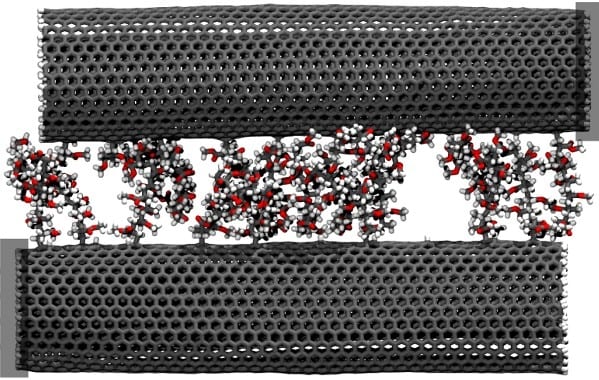The production of carbon nanotube (CNT) yarns with high strength and toughness remains a major challenge due to the intrinsically weak interactions between “bare” CNTs. To this end, researchers have combined nanomechanical shear experiments between functionalized bundles of CNTs with multiscale simulations to reveal the role of nanotube surface functionalization on CNT-CNT interactions.
Notably, they found that in-situ chemical vapor deposition functionalization of CNT bundles by poly(methyl methacrylate) -like oligomers enhanced the shear strength of bundle junctions by about an order of magnitude compared to “bare” van der Waals interactions between pristine CNTs. Through multiscale simulations, the group attributed the enhancement of shear strength to an interlocking mechanism of polymer chains in the bundles, dominated by van der Waals interactions, and stretching and alignment of chains during shearing. Unlike covalent bonds, such synergistic weak interactions can reform upon failure, resulting in strong, yet robust fibers.


















